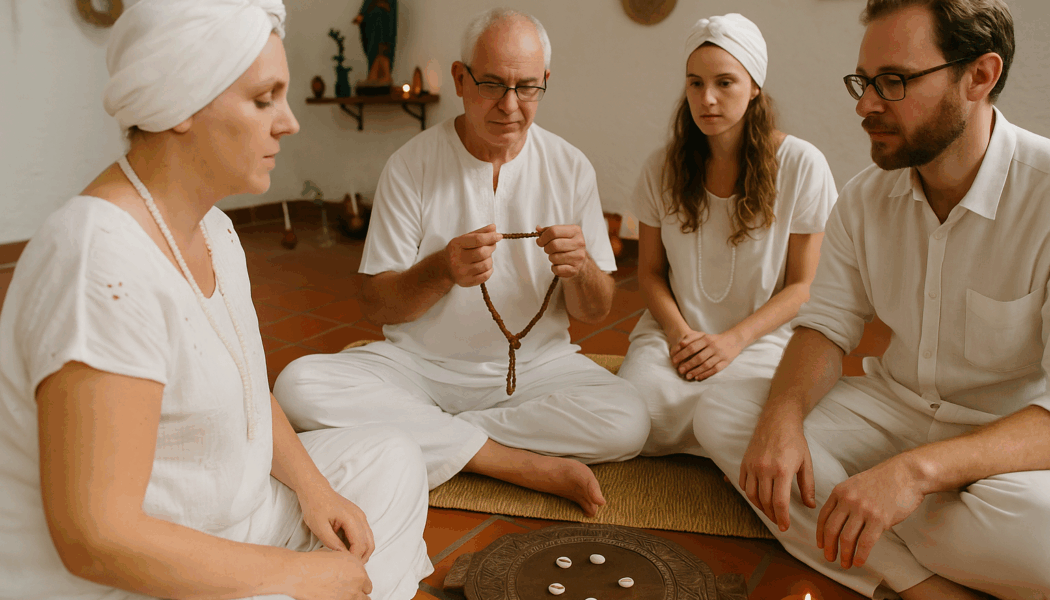When we talk about Brazil’s rich spiritual traditions, names like Candomblé, Umbanda, and Orisha worship naturally come up. But behind these vibrant practices lies an ancient, complex system of divination and wisdom: Ifá.
So how did this sacred Yoruba tradition, rooted in West Africa, find a home thousands of miles away in Brazil?
Let’s trace the powerful journey of Ifá across the Atlantic—a story of survival, resistance, and spiritual resilience.
🛶 1. From the Yoruba Homeland to the Shores of Brazil
Between the 16th and 19th centuries, millions of Africans were forcibly taken from their homelands and brought to the Americas during the transatlantic slave trade. Among them were the Yoruba people, from present-day Nigeria, Benin, and Togo.
With them came their language, music, deities—and spiritual systems like Ifá.
Ifá is more than just divination; it is a sacred knowledge system passed down by word of mouth for generations. At its core is Orunmila, the Orisha of wisdom and destiny, and his priests, the Babalawo, who interpret divine messages through sacred tools like the Opele chain or cowrie shells.
🕯️ 2. Preservation Through Syncretism
In Brazil, enslaved Africans were forbidden from practicing their religion. But they found ways to protect it. One key method was syncretism—the blending of African deities with Catholic saints.
- Sango, the Orisha of thunder, was associated with St. Jerome
- Orunmila, the spirit of divination, aligned with St. Francis of Assisi
These disguises allowed Ifá and Orisha traditions to survive—hidden in plain sight.
🌿 3. The Birth of Afro-Brazilian Religions
Over time, Yoruba spiritual practices merged with other African, Indigenous, and Catholic influences. This gave rise to Afro-Brazilian religions like:
- Candomblé: Deeply rooted in Yoruba cosmology, including Ifá divination.
- Umbanda: A syncretic faith that blends African spiritism with Catholicism and Indigenous beliefs.
In Candomblé, you’ll find Babalawos performing rituals similar to those in Yorubaland—casting shells, honoring Orishas, and consulting the wisdom of Ifá to guide life decisions.
📚 4. Ifá in Brazil Today
Far from disappearing, Ifá has grown. Today, many Afro-Brazilians are reconnecting with their Yoruba roots. Some travel to Nigeria for full initiation. Others invite Yoruba priests to Brazil to teach, initiate, and restore lost links in spiritual lineages.
Temples dedicated to Ifá and Orisha worship are found across Brazil—in cities like Salvador, Rio de Janeiro, and São Paulo. Traditional chants, rituals, and languages like Yoruba are preserved and taught.
🔥 A Legacy of Resistance and Wisdom
Ifá’s journey to Brazil is not just a story of religion—it’s a story of cultural survival. Despite slavery, persecution, and centuries of oppression, the Yoruba spiritual system crossed oceans and continues to thrive today.
Every time an Opele drops or a prayer is said to Orunmila, it’s a reminder: wisdom travels, even when chained.
Curious about how Ifá works in modern Candomblé or want to learn about the role of Babalawos in Brazil today? Drop a comment below!
